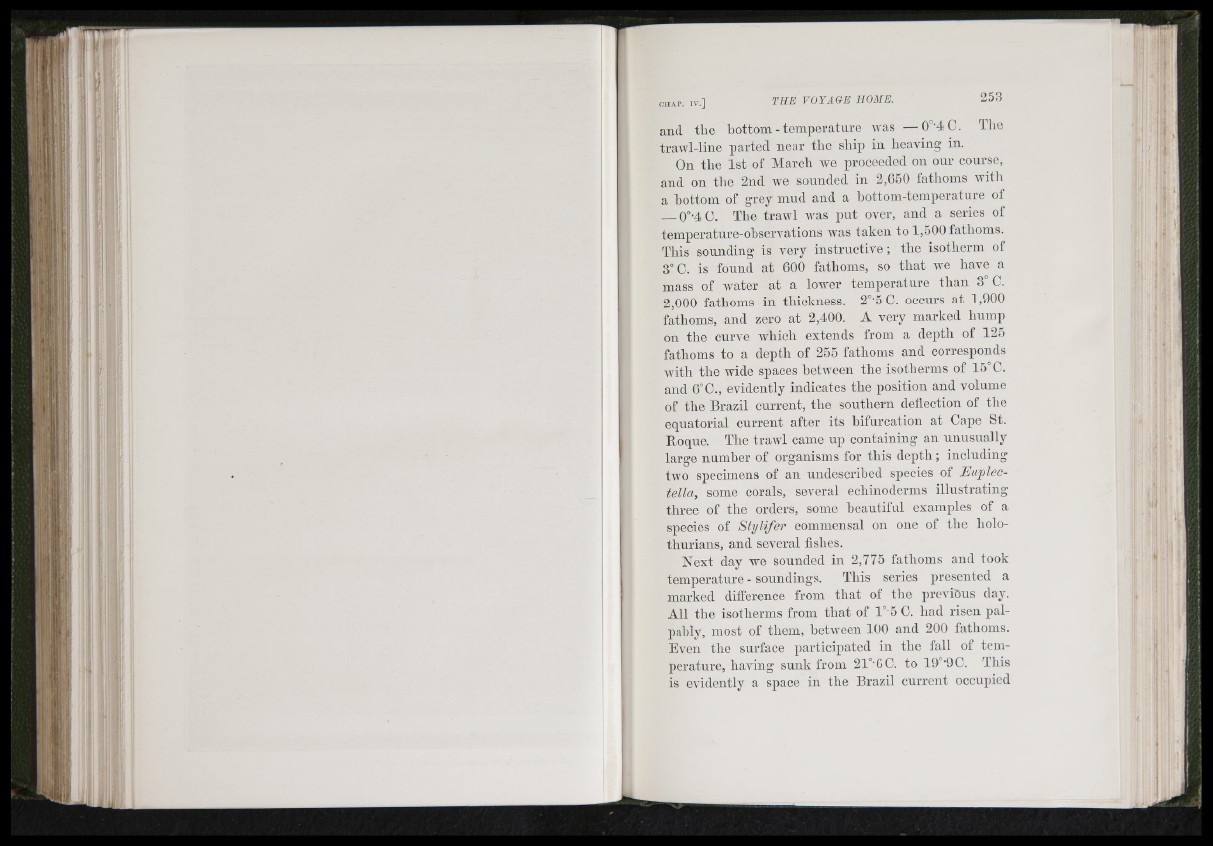
11p.'.
V'
V j
lii "
and the hottom-temperature was — 0°-4C. The
trawl-line parted near the ship in heaving in.
On the 1st of March we proceeded on onr course,
and on the 2nd Ave sounded in 2,650 fathoms Avith
a hottom of grey mud and a hottom-temperature of
— 0°-4O. The trawl Avas p u t over, and a series of
temperature-ohservations was taken to 1,500 fathoms.
This sounding is very instructive ; the isotherm of
3°C. is fonnd at 600 fathoms, so th a t we have a
mass of Avater at a loAver temperature th an 3 C.
2,000 fathoms in thickness. 2°'5 C. occurs at 1,900
fathoms, and zero at 2,400. A very marked hump
on the curve which extends from a depth of 125
fathoms to a depth of 255 fathoms and corresponds
Avith the wide spaces hetAveen the isotherms of 15°C.
and 6°C., evidently indicates the position and volume
of the Brazil current, the southern deflection of the
equatorial current after its bifurcation at Cape St.
Roque. The trawl came up containing an unusually
large number of organisms for this depth ; including
two specimens of an nndescribed species of Faplec-
tella, some corals, several echinoderms illustrating
three of the orders, some heautiful examples of a
species of Stijlifer commensal on one of the holo-
thurians, and several fishes.
Next day we sounded in 2,775 fathoms and took
temperature - soundings. This series presented a
marked difierence from that of the previous day.
All the isotherms from that of 1°'5 C. had risen palpably,
most of them, between 100 and 200 fathoms.
Even the surface participated in the fall of temperature,
having sunk from 21°'GC. to 19°'90. This
is evidently a space in the Brazil current occupied